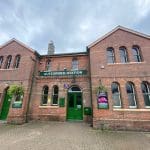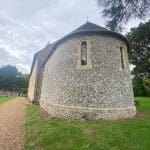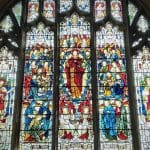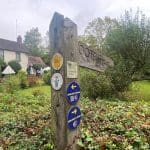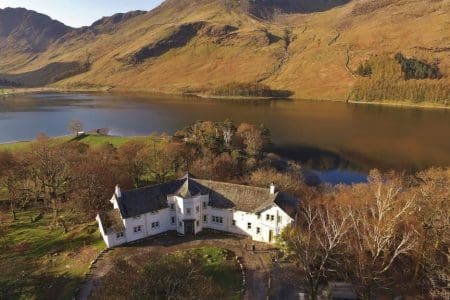Mark Bibby Jackson follows a stretch of the old pilgrims’ way from New Alresford to Winchester, on the recently opened St James’ Way.
Perhaps it was all the Chaucer I studied at school and university, but I have always wanted to go on a pilgrimage. Sadly I have never walked the Camino de Santiago, but this year I was given the opportunity to walk part of the Camino Ingles, or St James’ Way, which opened on 25 July 2022.
The whole St James’ Way leads 68.5 miles from Reading Abbey to Southampton, from where pilgrims may have taken a ship to France or Spain. My pilgrimage was along the relatively short stretch from New Alresford to Winchester.
New Alresford and the Watercress Line
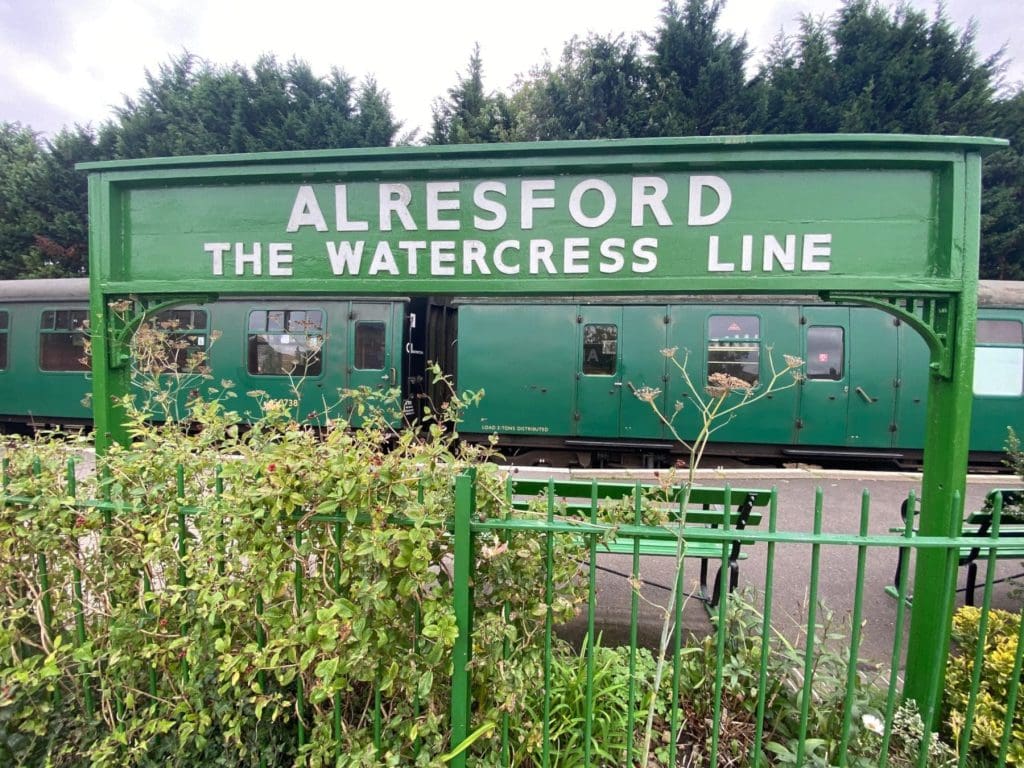
The latter with its Winchester Cathedral, Christmas Market and Festival is renowned, but the former is not without note, hosting an annual Alresford Watercress Festival.
My petty pilgrimage starts with taking the #64 Winchester to New Alresford bus from just outside my hotel the Holiday Inn next to the Winchester Science Centre. This takes me to St John the Baptist Church in the heart of New Alresford. Pilgrims would sign the book here before departing along the St Swithun’s Way, although unfortunately I arrive before the church office opens. From here I retrace my steps to New Alresford station.
Watercress has been cultivated in Hampshire since the 19th century, and transported to Covent Garden in London, first by coach and then by rail on the Watercress Line. You can take trips by steam train along the line or visit the museum. However, I had my walking boots on.
New Alresford to Itchen Stoke
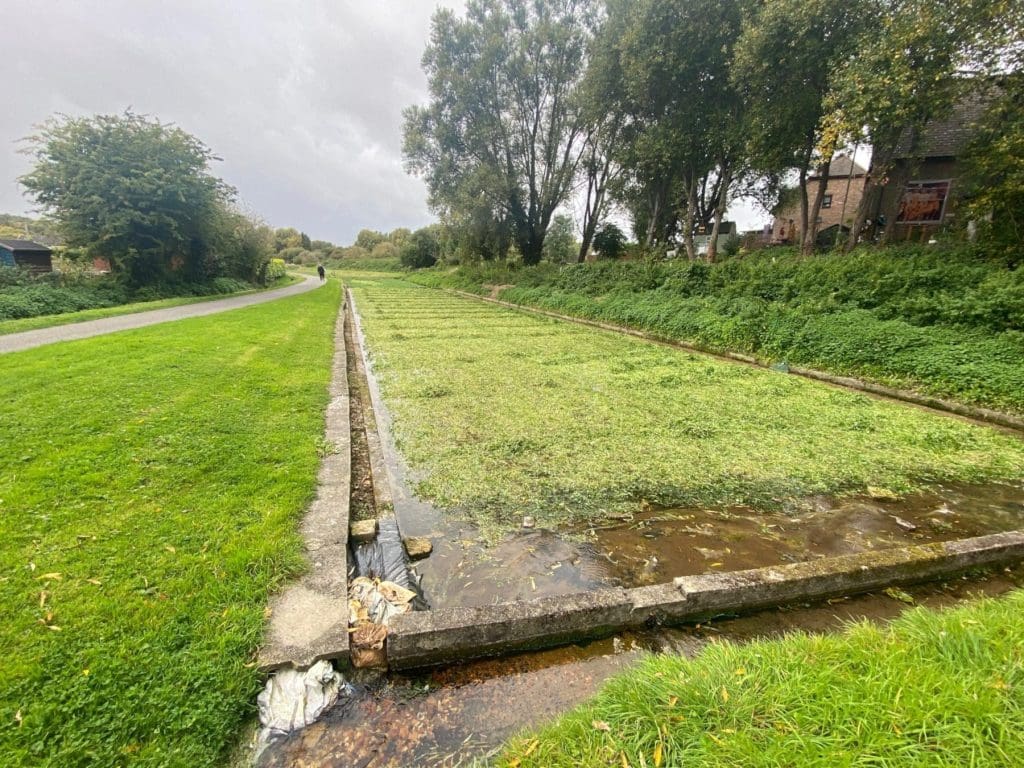
The initial walk takes you along Jacklyns Lane and then a footpath next to house number 82. Before long you emerge to Spring Lane which is on the St Swithun’s Way.
Beautiful beds of watercress lie on each side of the path, showing that watercress is still very much a part of the local economy. As I cross a ford above a stream and then a small bridge, cyclists pass me.
A path indicates the Camino Ingles, as well as St Swithun’s Way and The Watercress Way, just to leave me in no doubt that I am on the right path. The tree covering proves timely as it starts to rain.
Then I follow East Lane towards the village of Ovington where there is a beautiful stream just after a statue of Buddha. Clearly walkers of all faiths are accepted on this pilgrimage.
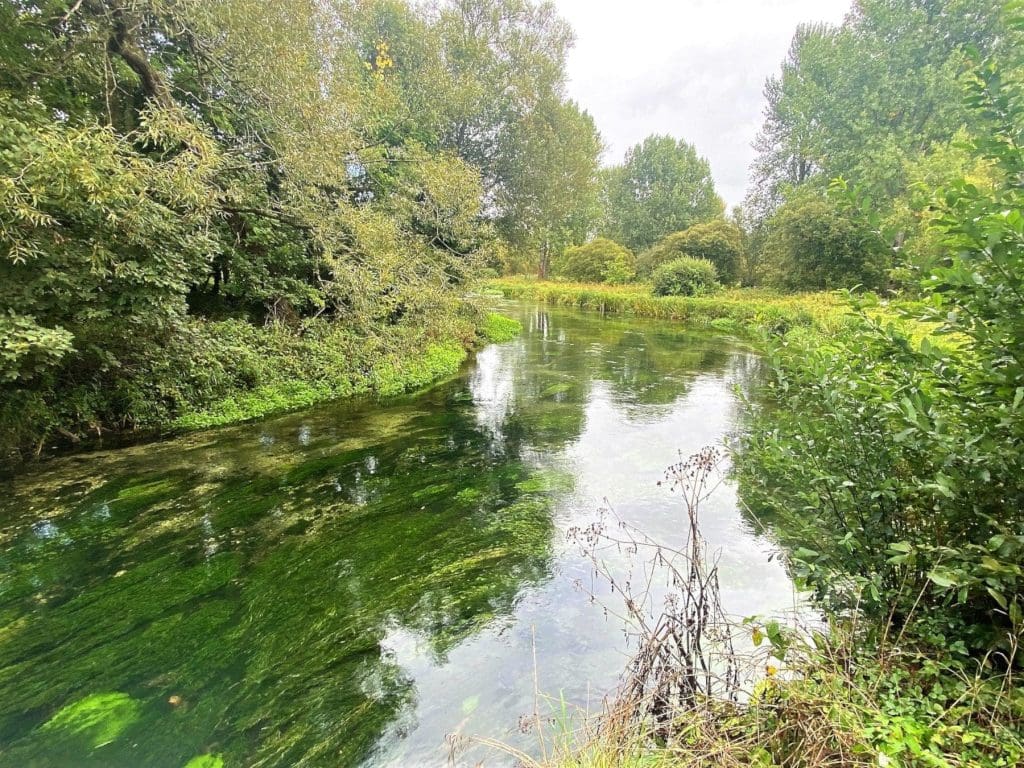
At Ovington the walk adopts another name becoming the Itchen Way next to the Bush Inn pub. Although the Way leads left, I cross a small bridge on the right to reach a causeway between two branches of the river Itchen. This is an idyllic stretch only slightly spoilt by the persistent rain. The low-level path next to the gentle waters reminds me of the walk around Freshwater Estuary in the Isle of Wight. It is equally pleasant.
I pass other walkers travelling in the other direction – from Yorkshire not Spain – who give up their pilgrimage, perhaps the lure of the Bush Inn proves too strong?
Along the Itchen Way
The reason for my slight detour is to see the church of St Mary’s Itchen Stoke, which reminds me of St Michael and All Angels, a church I had visited in the Yorkshire Wolds while following the Hockney Trail, although it is nowhere near as elaborate.
St Mary’s was built between in the late 19th century to a design by Henry Conybeare. The most remarkable aspect of the church is the labyrinth of 1,600 glazed tiles that decorates the floor of the chancel, modelled on Chartres Cathedral.
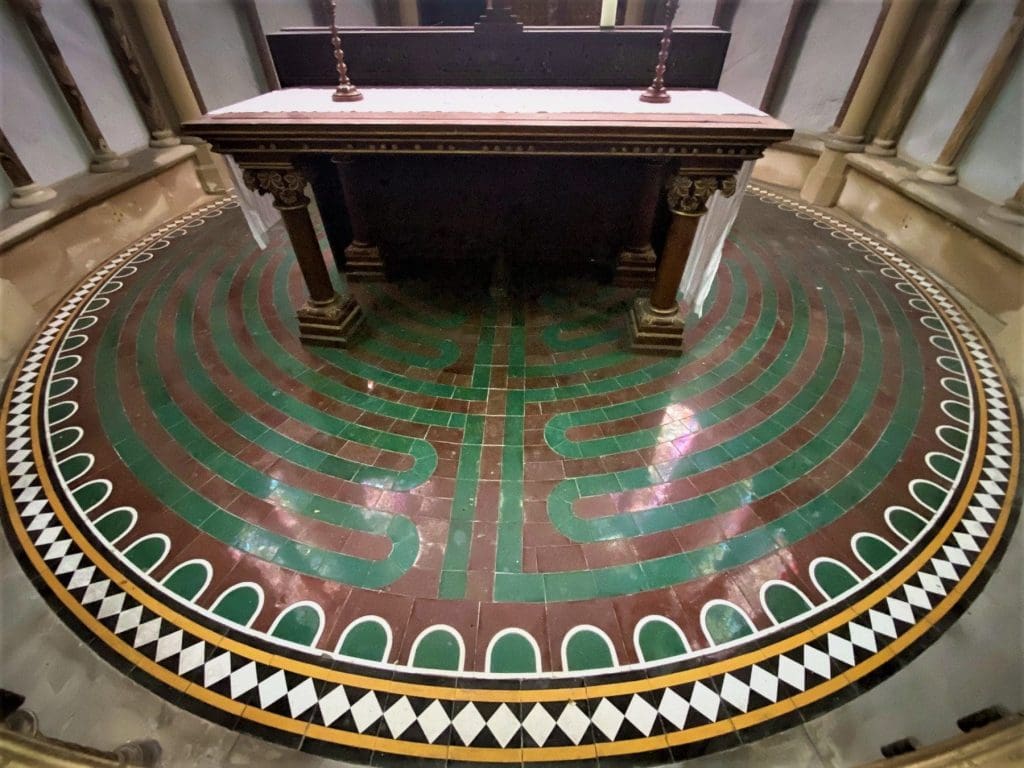
From here I walk back towards the river Itchen before taking a footpath on my right towards Itchen Abbas across some fields where cows await me.
I pass over two bridges. At the first a man is fly-fishing. After the second I narrowly avoid decapitation by limbo dancing under a low hanging tree. By now the rain has stopped. Removing my waterproof jacket underneath clear blue skies I wonder what the fuss was all about.
The Itchen Way is pretty well marked. After a couple of open fields, from which I can see swans drifting along the river down below, I reach some woods. The stretch along the river is easily the most picturesque part of my walk. Before long a golf course rears its ugly head on the right. I doubt St Swithun would have approved.
Passing this I turn sharp left and then right over two bridges towards the village of Itchen Abbas. The first bridge has a refreshing cascade on its left the second is more graceful. The village has a Norman church – St John the Baptist – which was rebuilt in the mid to late 19th century. Perhaps of more interest than the building is the churchyard where John Hughes, the last man to be hanged for horse stealing in England, lies buried.
The third church I encounter is St Swithun’s church in Martyr Worthy. Built in the 13th century it has the most beautiful Norman doors.
St Bartholomew’s Hyde and Winchester Cathedral
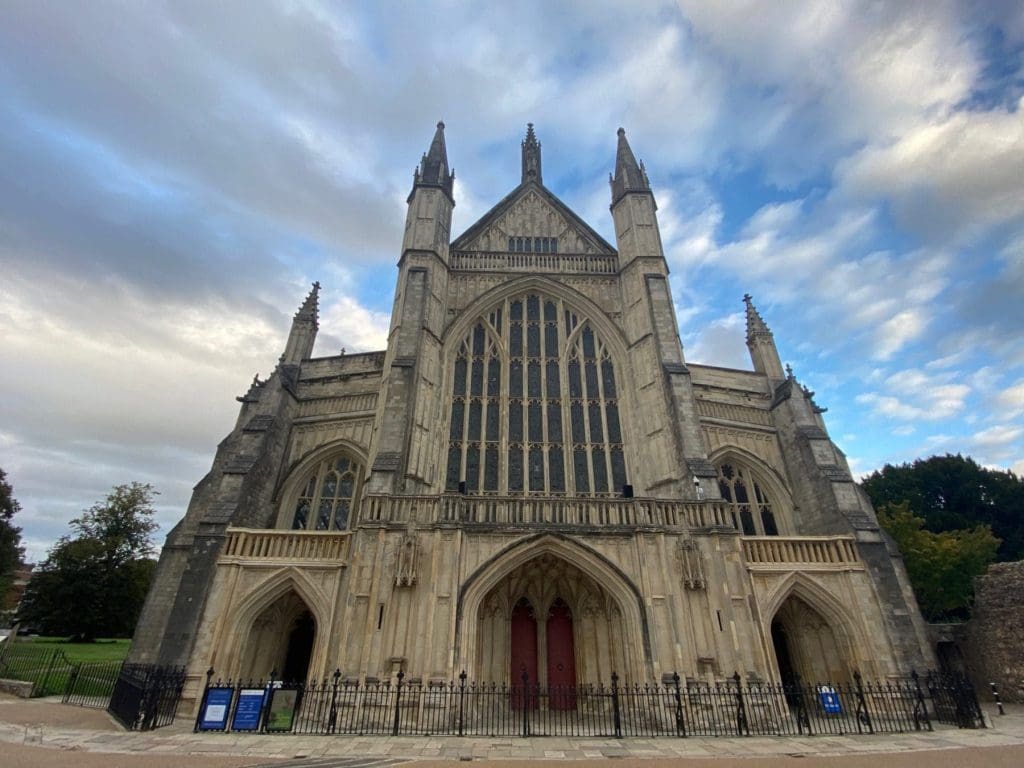
By now with all my pausing to take photos and notes I have run out of time and so could not complete my walk to Kings Worthy where there is a church with a Purbeck marble front before heading onto Winchester.
Instead I head off for the village of Easton eventually winding my way back to the hotel. Afterwards I drive into Winchester to visit St Bartholomew’s Hyde, which was built 900 years ago for the lay community of Hyde Abbey, and is said to be where King Alfred was buried.
The previous evening in Winchester I visited the cathedral, where a service was taking place, before dining at the Kyoto Kitchen.
The first church was built on the site where Winchester Cathedral now stands in 648. Here Canute is buried and Edward the Confessor was crowned in 1043. Winchester was the heart of Alfred’s kingdom, and the capital of England before London became de facto capital after the Norman Conquest.
The old minister was demolished between 1083 and 1094 to make way for current cathedral. Alfred’s body now lies here, as does St Swithun. It also marked the end of my pilgrim’s way.
Pilgrims’ Way Photo Gallery
Winchester Hotel
We stayed at the Holiday Inn just outside of Winchester, accessible by the #64 bus or a £8-9 taxi. The rooms were really well equipped, the breakfast excellent – my companion praised the eggs benedict – and the staff extremely helpful (beyond the call). It is right by the Winchester Science Centre. You can read more about it in Irene Caswell’s review of the Holiday Inn Winchester. Bookings can be made here.
More Things To Do in Hampshire
For further inspiration on what to do in Hampshire apart from walking the pilgrims’ way, click here.
All photos by Mark Bibby Jackson
